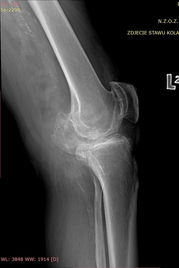
KNEE SURGERY
Patients suffering from knee problems come to my office very often. Thanks to detailed examination, knowledge of anatomy and understanding of complex biomechanics of the knee, I am able to choose the correct method of treatment. This allows my patients to quickly return to good health and physical activity, as well as avoid complications in the future.
To find out about rehabilitation of the knee and the protocols that should follow each of the below surgical procedures, please go to rehabilitation.
Meniscus injury
Meniscal injuries most often occur in physically active patients. The aim of the treatment is to let the meniscus heal properly, so that it can stabilize and cushion the knee joint, preventing its cartilage from degenerating.
In my practice I do all I can to preserve the injured meniscus, by arthroscopic repair, reconstruction, or substitution of the damaged elements.
When the tear occurs in the so called white zone, which lacks blood vessels, there are no chances of healing, and thus partial meniscectomy is recommended. However it is very important to bear in mind, that the bigger part of meniscus is resected, the higher risks of progressive cartilage degeneration.
Ligaments reconstruction
The ligament which is most often reconstructed is ACL, or anterior cruciate ligament, whereas injuries to PCL (posterior cruciate ligament), MCL (medial collateral ligament), LCL (lateral collateral ligament) and PLC (posterolateral corner) may not always require repair. When torn, these ligaments may need to be reconstructed to provide stability and full function of the knee joint.
Cartilage reconstruction
Damages to the cartilage, both resulting from injury and from degenerative process are a challenge to any orthopaedic surgeon.
Mechanical axis of the lower limb is crucial for preservation of knee physiology.
For patients with normal mechanical axis and stable limb, it is possible to repair the cartilage using various methods such as abrasion, microfractures, glue, membrain, cartilage graft, synthetic graft, and others.
Osteotomy
Osteotomy is a surgical procedure in which the bone is cut in order to align the axis of the limb and relieve pressure on that side of the knee where cartilage has been damaged. In this way, weight is taken off the damaged part of the knee, improving its function and leaving it pain free.
ARTHROPLASTY
Total knee replacement is performed only in patients with severely damaged joint, where previous treatment did not bring satisfactory effects.
Very often mechanical axis misalignment is observed alongside joint degeneration and thus cartilage reconstruction is not possible. Artificial elements, or implants, are the only chance for patients to regain full range of motion and return to physical activity.











